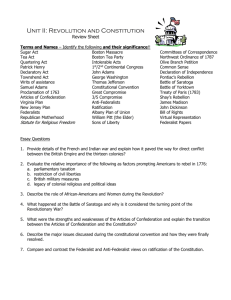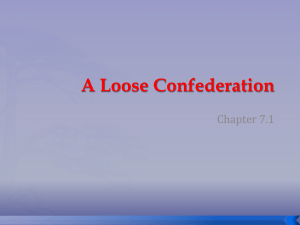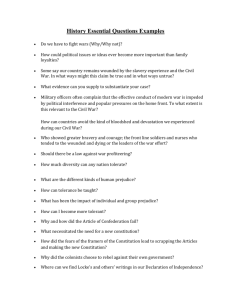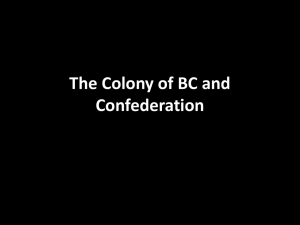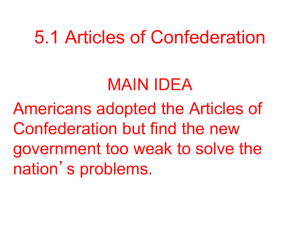Lesson Plan 6.doc - Texarkana Independent School District
advertisement
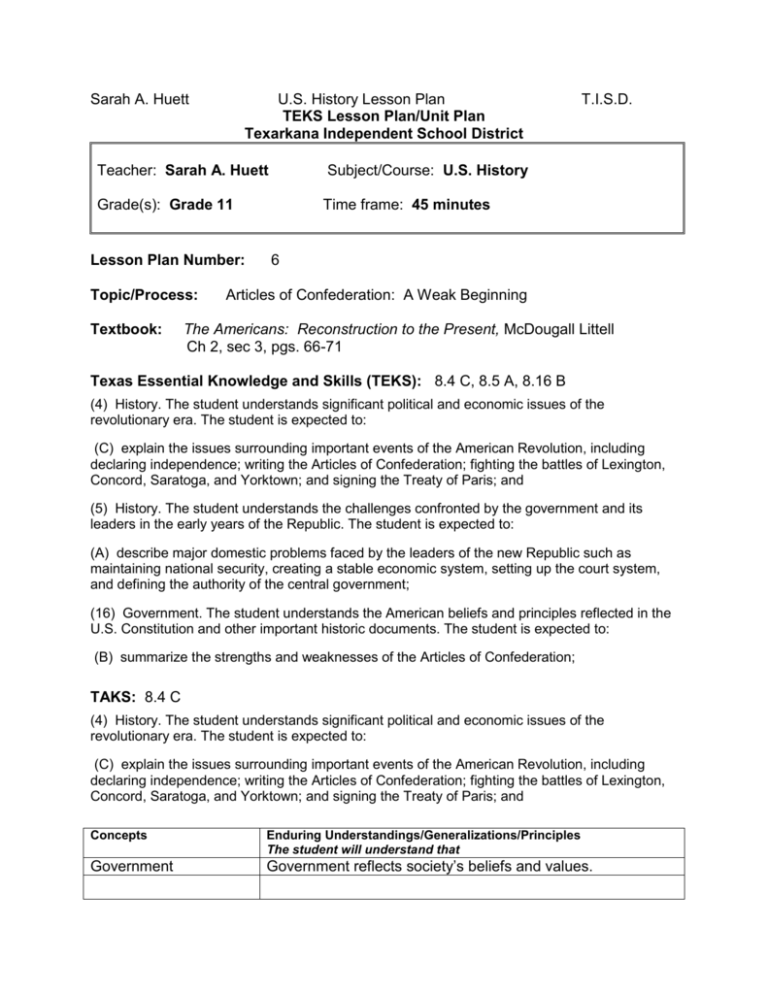
Sarah A. Huett U.S. History Lesson Plan TEKS Lesson Plan/Unit Plan Texarkana Independent School District Teacher: Sarah A. Huett Subject/Course: U.S. History Grade(s): Grade 11 Time frame: 45 minutes Lesson Plan Number: Topic/Process: Textbook: T.I.S.D. 6 Articles of Confederation: A Weak Beginning The Americans: Reconstruction to the Present, McDougall Littell Ch 2, sec 3, pgs. 66-71 Texas Essential Knowledge and Skills (TEKS): 8.4 C, 8.5 A, 8.16 B (4) History. The student understands significant political and economic issues of the revolutionary era. The student is expected to: (C) explain the issues surrounding important events of the American Revolution, including declaring independence; writing the Articles of Confederation; fighting the battles of Lexington, Concord, Saratoga, and Yorktown; and signing the Treaty of Paris; and (5) History. The student understands the challenges confronted by the government and its leaders in the early years of the Republic. The student is expected to: (A) describe major domestic problems faced by the leaders of the new Republic such as maintaining national security, creating a stable economic system, setting up the court system, and defining the authority of the central government; (16) Government. The student understands the American beliefs and principles reflected in the U.S. Constitution and other important historic documents. The student is expected to: (B) summarize the strengths and weaknesses of the Articles of Confederation; TAKS: 8.4 C (4) History. The student understands significant political and economic issues of the revolutionary era. The student is expected to: (C) explain the issues surrounding important events of the American Revolution, including declaring independence; writing the Articles of Confederation; fighting the battles of Lexington, Concord, Saratoga, and Yorktown; and signing the Treaty of Paris; and Concepts Enduring Understandings/Generalizations/Principles The student will understand that Government Government reflects society’s beliefs and values. Sarah A. Huett U.S. History Lesson Plan T.I.S.D. Sequence of Activities (Instructional Strategies): 1. Focus: Have students write their own definition of: republic. 2. Discussion: Have students discuss their definitions. Then begin discussing the components of the Articles of Confederation. Discuss the role of both the state and national governments under the Articles of Confederation. 3. Activity: Have students work with a partner to pick out the components they see as “weaknesses” in the Articles. Have the students explain why they think each of these components can been seen as “weaknesses”. Have students discuss their findings in class. Questions to consider in Lesson: 1) How did Shay’s Rebellion shed an unfavorable light upon our new government? What “weaknesses” did it expose? 2) How did the absence of a judicial branch contribute to the weakness of the Articles of Confederation? Assessment of Activities: Oral Discussion Classroom Observation Products: List of Weaknesses and Reasoning Prerequisite Skills: 1. Previous knowledge of U.S. government for other social studies courses. Sarah A. Huett Key Vocabulary: U.S. History Lesson Plan T.I.S.D. Articles of Confederation, republic, Shay’s Rebellion Materials/Resources Needed: Books, overheads, power point, LCD Projector Modifications: Allow students to have extended time to complete activities. Follow all modifications on student’s IEP. Differentiated Instruction: Have students create 5 “amendments” to the Articles of Confederation that they will solve all of the document’s “weaknesses”. Have statements share and discuss their amendments as a class. Teacher Notes: Sample Test Questions: 1. What power did the Articles of Confederation give to the national government? A. B. C. D. declare war collect taxes develop a national court system enforce laws 2. The result of Shay’s Rebellion was to demonstrate that A. the government set up by the Articles of Confederation was weak B. the government could function effectively in times of crisis C. individual states had too much power D. citizens would always protest new taxes Project developed and delivered through a collaborative Research Grant between Texarkana Independent School District and TAMU-T Regents’ Initiative.

